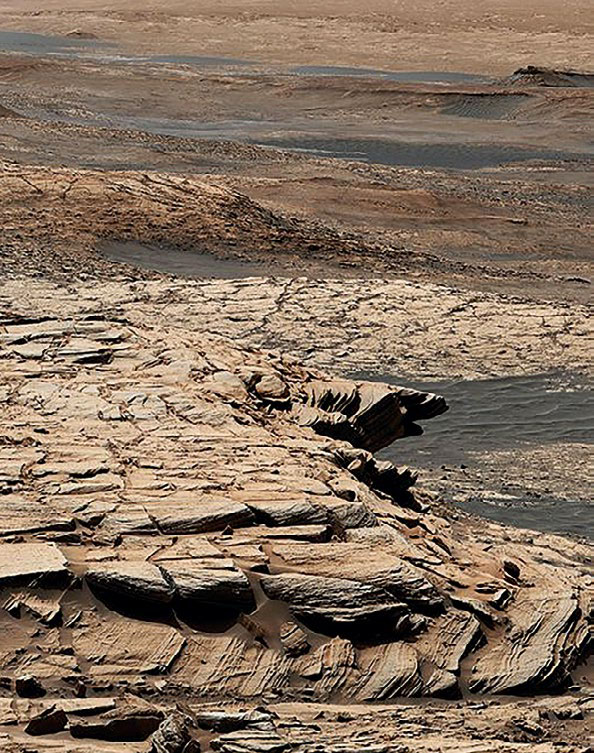Words by Elizabeth Howell NASA’s Curiosity rover is embarking on a road trip on Mars. The nearly eight-yearold mission will be guided through a traverse roughly 1.6-kilometres (one-mile) long that will see it climb farther up a mountain to learn more about the planet’s history - and whether it could have been habitable for microbial life in its ancient past.

Lueders is the first woman to head human spaceflight at NASA
© NASA/JPL-Caltech
Curiosity is on its way to an area on the 5.5-kilometre (3.4-mile) high Mount Sharp (Aeolis Mons) nicknamed the ‘sulphate-bearing unit’. Sulphates are usually formed around water as it evaporates, and these leftovers could provide more information about how the surface of Mars changed roughly 3 billion years ago when the planet lost most of its atmosphere and running water was no longer possible on the surface.